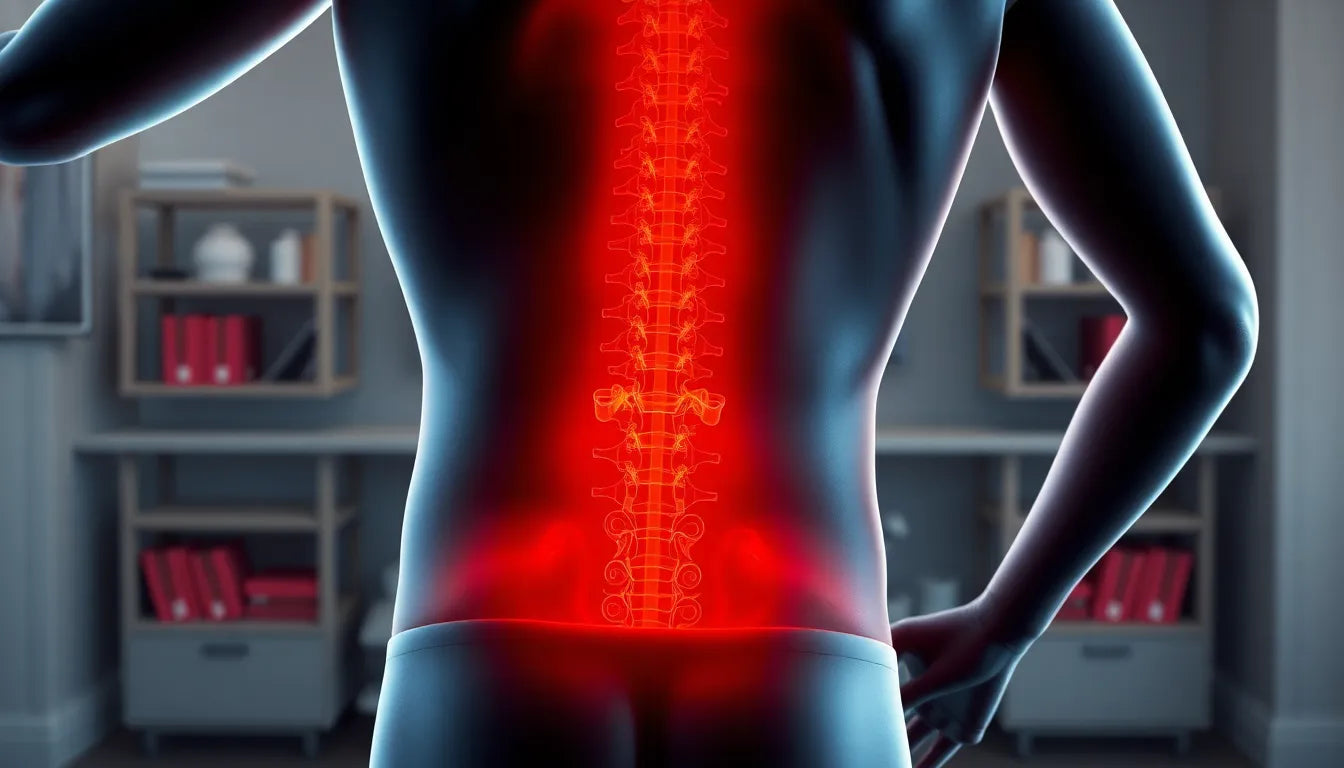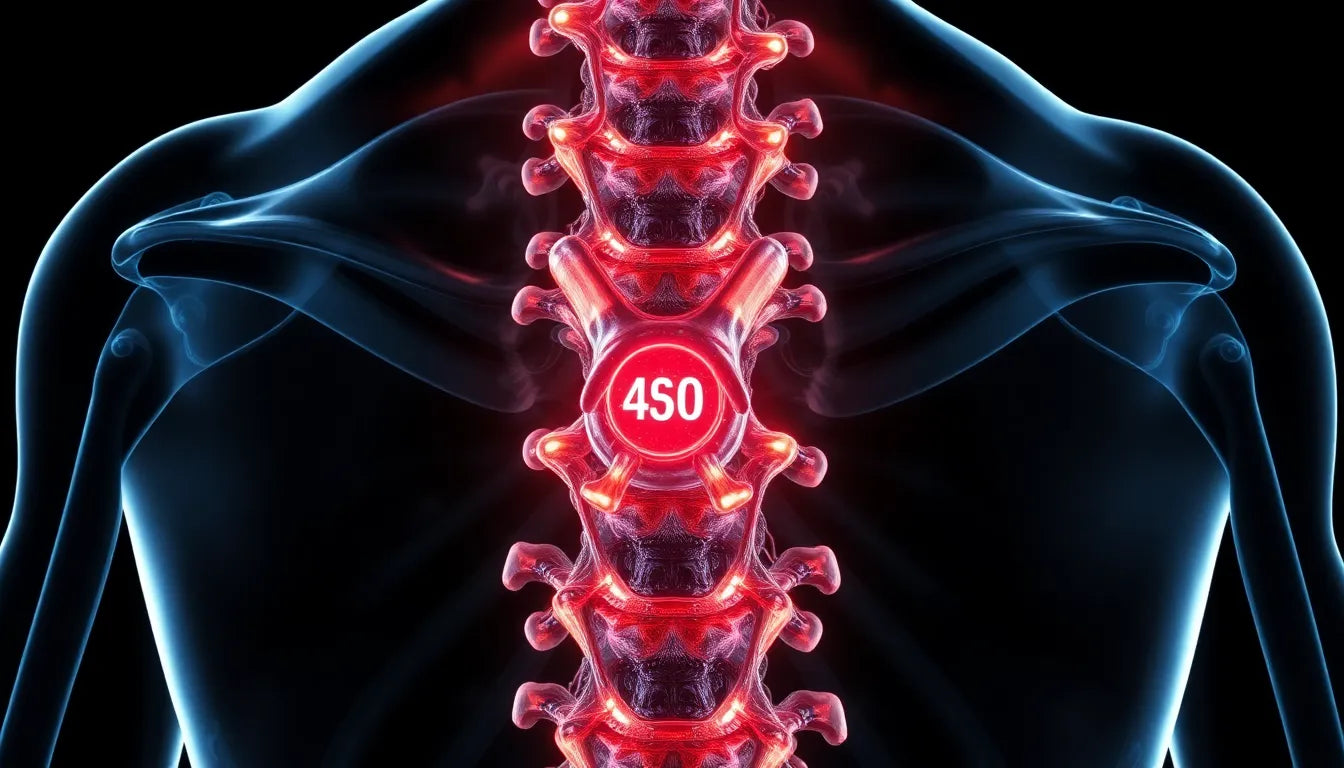Understanding how to fix a herniated disc starts with recognizing what a herniated disc actually is. This common spinal condition occurs when the soft inner gel of a spinal disc pushes through a crack in its tougher exterior. This displacement can press on nearby spinal nerves, leading to a range of uncomfortable symptoms. The most prevalent symptoms include back pain, leg pain, and sensations of numbness or tingling in the limbs. These symptoms can vary in intensity, often becoming more pronounced with specific movements or prolonged periods of sitting or standing.
Prevalence and impact of herniated discs
Herniated discs are more common than many might think, affecting a significant portion of the population at some point in their lives. They are particularly prevalent among individuals aged 30 to 50, although they can occur at any age. The impact of a herniated disc on daily life can be substantial, interfering with work, recreational activities, and even simple tasks like walking or sitting comfortably. The pain and discomfort can lead to reduced mobility and a decrease in overall quality of life, emphasizing the importance of effective management strategies.
The goal of this blog post is to explore various solutions for relief from herniated disc symptoms. By understanding the condition and its effects, individuals can make informed decisions about their treatment options. From conservative treatments like physical therapy and medication to more advanced interventions, there are numerous pathways to relief. The following sections will delve into these options in detail, providing valuable insights into how to manage and alleviate the discomfort caused by a herniated disc.
conservative treatments for herniated disc relief
When exploring how to fix a herniated disc, conservative treatments often serve as the first line of defense. These approaches focus on alleviating pain and promoting healing without the need for invasive procedures. One of the primary methods involves the use of medication. Analgesics and anti-inflammatory drugs are commonly prescribed to manage pain and reduce inflammation around the affected area. These medications provide symptomatic relief, allowing individuals to engage more comfortably in daily activities.
In addition to medication, lifestyle changes play a crucial role in managing a herniated disc. Modifications such as weight loss and activity adjustments can significantly reduce the strain on the spine. By maintaining a healthy weight, individuals can decrease the pressure exerted on spinal discs, potentially alleviating symptoms. Furthermore, adjusting activities to avoid movements that exacerbate pain can aid in the recovery process.
the role of physical therapy
Physical therapy is another cornerstone of conservative treatment for herniated discs. It focuses on strengthening the core and back muscles, which are essential for supporting the spine. A well-designed physical therapy program can enhance flexibility, improve posture, and reduce the risk of further injury. Common exercises recommended for herniated disc relief include pelvic tilts, knee-to-chest stretches, and gentle yoga poses. These exercises not only help in pain management but also promote long-term spinal health.
exploring alternative therapies
For those seeking additional relief, alternative therapies such as acupuncture and chiropractic care offer promising options. Acupuncture, an ancient practice, involves inserting thin needles into specific points on the body to promote healing. It is believed to stimulate endorphin release and target nerve pathways, providing pain relief for some individuals with herniated discs.
Chiropractic care, on the other hand, involves manual adjustments and spinal decompression techniques. Chiropractors aim to realign the spine, which can relieve pressure on the affected nerves. While these alternative therapies may not be suitable for everyone, they offer potential benefits for those looking for complementary approaches to traditional treatments.
interventional treatments for persistent pain
When conservative treatments do not provide sufficient relief, interventional treatments may be considered. Corticosteroid injections, specifically epidural steroid injections, are a common choice for short-term pain management. These injections deliver anti-inflammatory medication directly to the affected area, reducing swelling and alleviating pain. The effectiveness of corticosteroid injections is often enhanced when combined with physical therapy, as it allows patients to engage in rehabilitation exercises with reduced discomfort.
Another interventional option is percutaneous neurolysis, a minimally invasive procedure used to manage persistent pain. This technique involves the precise application of chemical agents or thermal energy to disrupt nerve signals, providing relief for individuals who have not responded to conservative measures. While these interventional treatments can offer significant benefits, they are typically reserved for cases where other methods have failed.
In conclusion, understanding how to fix a herniated disc involves exploring a range of treatment options. From conservative approaches like medication and physical therapy to more advanced interventional techniques, there are numerous pathways to relief. By tailoring treatment plans to individual needs and preferences, individuals can effectively manage their symptoms and improve their quality of life.
Surgical solutions for herniated discs
In some cases, conservative and interventional treatments may not provide adequate relief from herniated disc symptoms. Surgical solutions are considered when symptoms persist despite other treatments, particularly if there are significant neurological deficits or intractable pain. Surgery aims to relieve pressure on the affected nerves and restore normal function.
Criteria for surgery
Surgery is typically reserved for patients who experience severe pain that does not respond to other treatments or those with significant neurological symptoms, such as muscle weakness or loss of bowel or bladder control. The decision to undergo surgery is made after a thorough evaluation by a healthcare professional, considering the patient's overall health and specific condition.
Types of surgical procedures
Two common surgical procedures for herniated discs are lumbar discectomy and disc replacement surgery. A lumbar discectomy involves removing the portion of the disc that is pressing on the nerve, providing immediate relief from pain and neurological symptoms. Disc replacement surgery involves replacing the damaged disc with an artificial one, helping to maintain normal spinal motion and potentially reducing the risk of future problems. Combining surgery with adjunct care, such as physical therapy, can further reduce the risk of reherniation.
Patient-centered approaches to managing herniated discs
In addition to medical treatments, patients can adopt various home remedies and lifestyle changes to manage herniated disc symptoms. These patient-centered approaches focus on self-care and symptom management, complementing professional treatments.
Home remedies
Practical home remedies for herniated disc relief include hot and cold therapy, which can help manage pain and inflammation. Applying a cold pack to the affected area can reduce swelling, while heat therapy with a warm compress or heating pad can relax tense muscles and improve blood flow. Additionally, maintaining good posture and using ergonomic aids can alleviate strain on the spine.
Patient stories
Hearing from others who have experienced similar challenges can provide valuable insights and encouragement. Testimonials and case studies offer real-life examples of different treatment experiences, helping patients feel more informed and confident in their own treatment journey. These stories highlight the diverse paths to recovery and the importance of personalized care.
Frequently Asked Questions
What is the fastest way to relieve herniated disc pain?
Immediate relief from herniated disc pain can often be achieved through a combination of rest, medication, and applying ice or heat to the affected area. Over-the-counter pain relievers and anti-inflammatory drugs can help manage pain and reduce inflammation. However, it is crucial to consult a healthcare professional to determine the most appropriate treatment plan for your specific condition.
Can a herniated disc heal on its own?
Many herniated discs can improve over time with conservative management, such as medication, physical therapy, and lifestyle changes. The body's natural healing processes can reduce inflammation and relieve pressure on the nerves. However, some cases may require more intensive treatment if symptoms persist or worsen.
When should I consider surgery for a herniated disc?
Surgery may be considered when conservative and interventional treatments fail to provide relief, or if there are significant neurological symptoms, such as muscle weakness or loss of bladder control. A healthcare professional can help determine if surgery is appropriate based on the severity of symptoms and overall health.
Are there any preventive measures for herniated discs?
Preventive measures for herniated discs include maintaining a healthy weight, practicing good posture, and engaging in regular exercise to strengthen the back and core muscles. Avoiding activities that place excessive strain on the spine and using ergonomic aids can also help reduce the risk of disc herniation.
Sources
- NYU Langone Health. "Nonsurgical Treatments for Herniated Disc."
- PMC. "Management of Lumbar Disc Herniation: A Systematic Review."
- Cuellar Spine. "Herniated Disc Treatment Options."
- Medicine Journal. "Comparison of Treatments for Lumbar Disc Herniation."
- Sciatica.com. "11 Treatment Options for Herniated Discs."
- NCBI StatPearls. "Disc Herniation."


















